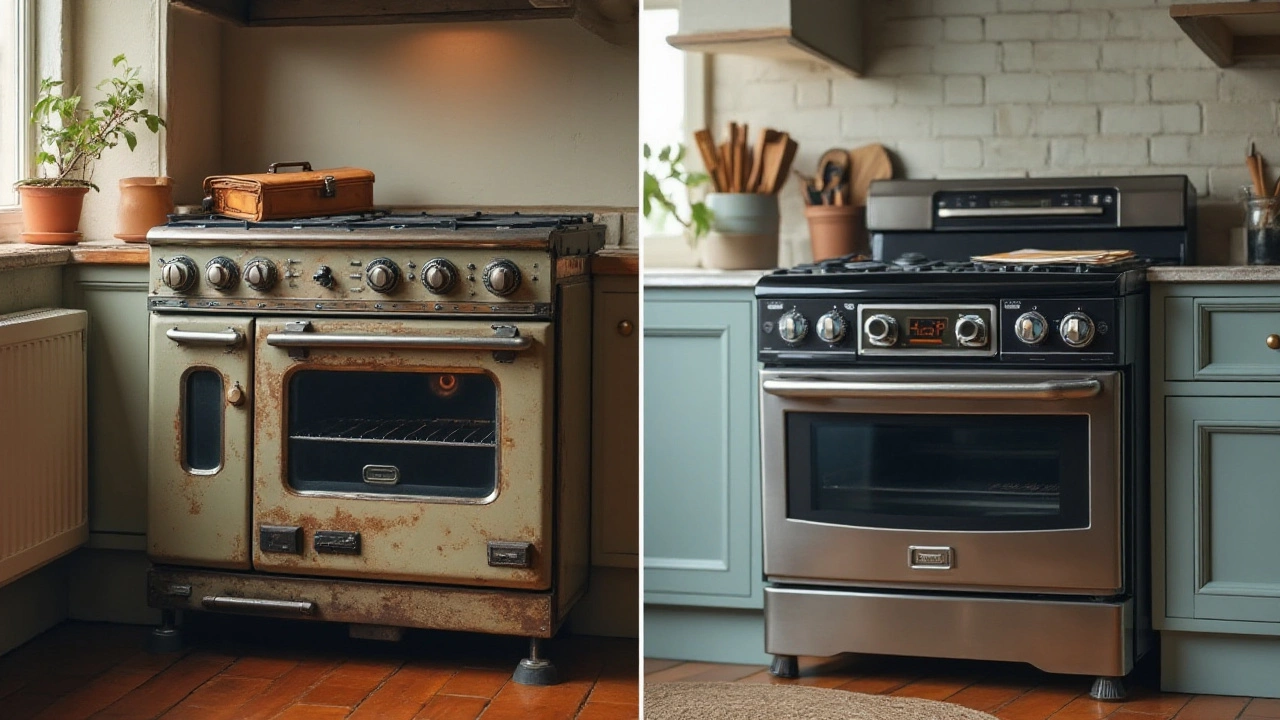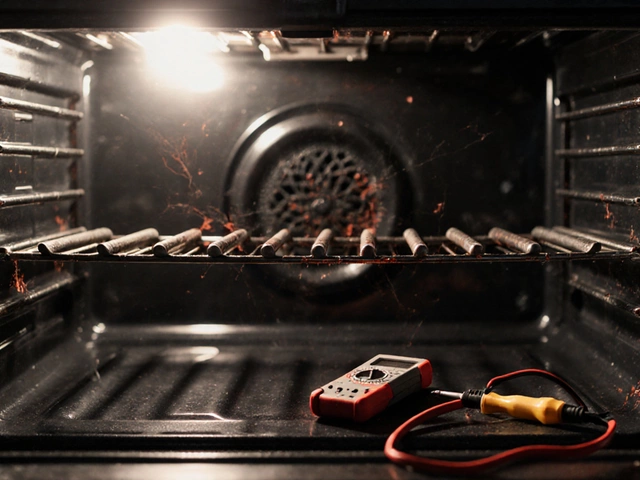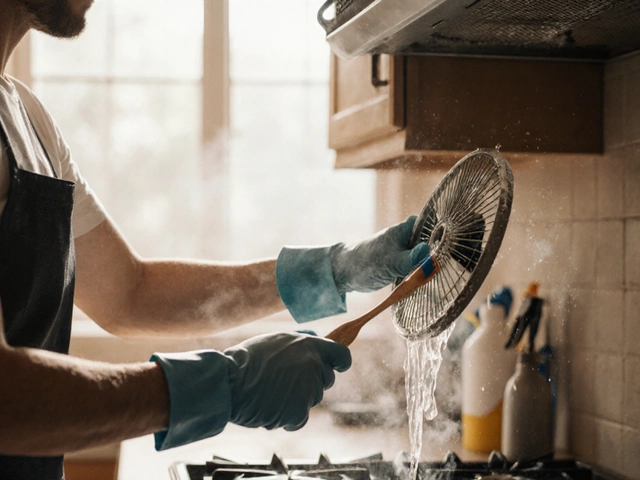The electric oven is undeniably one of the unsung heroes of the modern kitchen, tirelessly keeping pace as we whip up feasts for families and friends. But what happens when it goes on the blink? When heated elements falter or temperatures refuse to align, the question of whether to repair or replace presents itself like an unsolvable riddle.
Before you jump to conclusions or pull out the credit card for a new model, there are several points worth considering. Repairs can sometimes revitalize an otherwise reliable appliance, while in some cases, investing in a new oven might offer more energy-efficient and cost-effective solutions in the long run. This article aims to shed light on these considerations to help you navigate your decision-making process.
- Common Electric Oven Issues
- Cost Analysis: Repair vs. Replacement
- When to Repair Your Electric Oven
- Extending the Life of Your Oven
Common Electric Oven Issues
Electric ovens, while incredibly reliable, are not immune to their share of problems. Understanding these issues can often help in diagnosing and, at times, even fixing minor mishaps yourself. One of the frequent issues homeowners encounter is an oven that fails to heat up adequately. This can result from a faulty heating element, which is a situation that demands attention because without adequate heat, cooking is next to impossible. Heating elements are prone to wear over time and often need replacement. A multimeter can be a handy tool for testing for electrical continuity in these elements.
Another common issue is the inconsistency in temperature. If you slide your favorite casserole in for a warm-up, only to find it unevenly cooked, it might be the thermostat going rogue. Thermostats can wear out or become uncalibrated over time. Checking it with an oven thermometer can provide a clue. If your oven isn’t behaving itself, this might be the first culprit worth examining.
An insightful remark from the National Association of Home Builders noted, "The average lifespan of an electric range is about 13 years, but regular checks can extend it significantly."
Door problems often crop up as well. A door that won't close properly allows heat to escape, leading to longer cooking times and uneven results. This could be due to a faulty door seal or misaligned hinges, both of which can often be fixed without much trouble. Door seals can get grimy and deteriorate, so an occasional clean with warm soapy water is advised. Hinges, on the other hand, might get misaligned if ever forced. Another recurring hiccup includes the oven light not turning on or off as it should. Though seemingly minor, the light gives you insight into the cooking process without the constant opening of the door.
Finally, we can’t ignore the seldom-discussed issue of control panel woes. An unresponsive panel can be incredibly frustrating. This usually arises due to faulty wiring or sometimes just accumulated grime behind the buttons. Careful cleaning often resolves such issues but when that doesn’t help, professional intervention might be needed. Familiarizing yourself with these troubles can save you time and often money. Knowing when it's a quick fix or time to call in the experts prevents unnecessary headaches. In all these cases, being forewarned and prepared can make a world of difference.
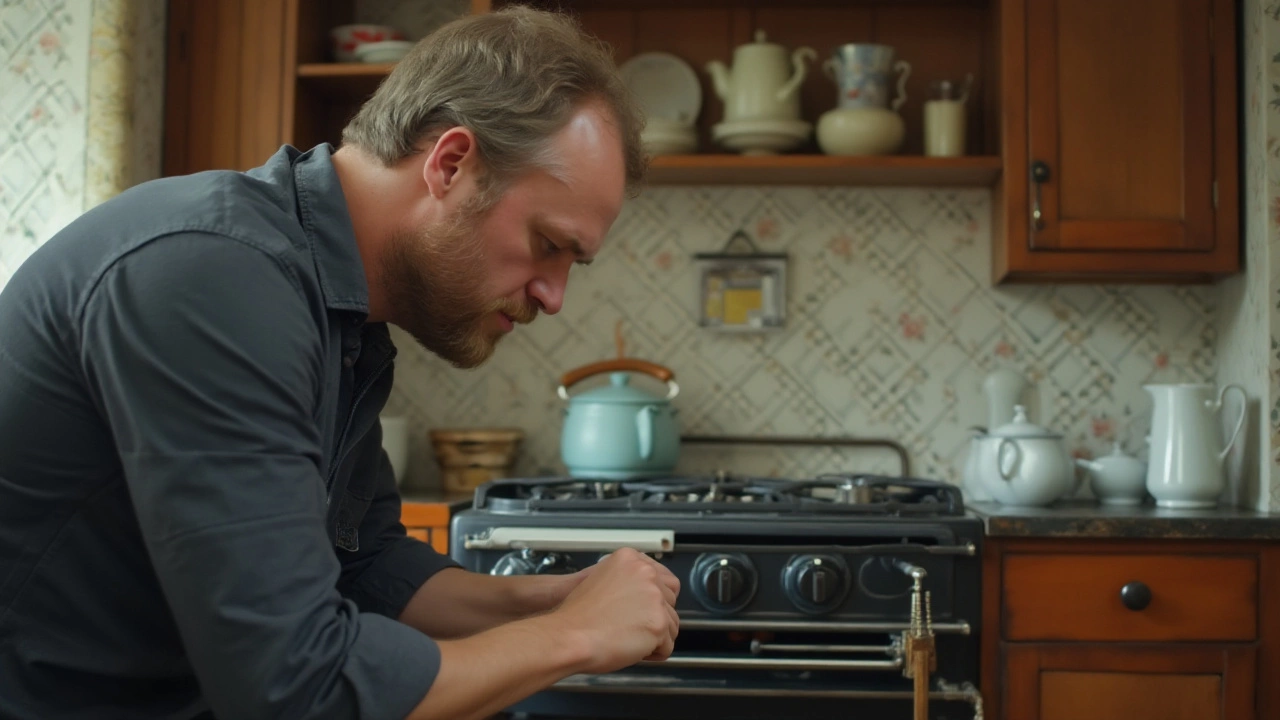
Cost Analysis: Repair vs. Replacement
When faced with a malfunctioning electric oven, one of the primary considerations is cost. Understanding whether a repair is financially viable compared to purchasing a replacement significantly hinges on a few key factors: the age of the oven, frequency and severity of issues, and how much you're willing to invest in keeping your oven operational. On average, repair costs can range anywhere between $100 and $400, depending on the specific issue and availability of parts. If the estimated repair costs exceed 50% of the price of a brand-new oven, many experts advise opting for a replacement.
Age, as mentioned, is crucial. An oven under five years old might still be under warranty, which could cover repair costs entirely. Most appliances are designed to last between 10 to 15 years, so if your oven is within that range and problems are persistent, replacement may ultimately be more cost-effective. Newer models often boast greater energy efficiency, which can reduce electricity bills and partially recoup the cost of investment over time. However, if an older oven has sentimental value or fits your cooking style perfectly, a repair might be more satisfying.
"When deciding between repair and replacement of household appliances, consider both current costs and future savings," suggests Jane Parker from Home Appliance Insights.
Replacement options have their own hidden costs too. Beyond the sticker price, you may need to factor in potential renovations if a new model doesn't fit the existing space. Installation costs can also add up, particularly for those involving complex electric connections. On the other hand, opting for the cheapest repair may lead to recurring issues, resulting in cumulative expenses that outweigh the price of a new unit. Striking the right balance requires careful assessment of warranty options, local repair statistics, and even the sustainability of your choices.
Evaluating Hidden Costs
Consider the longer-term picture as well. For example, if a replacement oven uses significantly less energy than your current model, the savings on your electricity bill might justify the initial investment. A newer oven might also offer upgraded features like smart technology or faster pre-heating times, which can enhance your culinary experience and add convenience. Weigh these potential benefits against the one-time cost of repair and make informed choices based on your lifestyle and budget.
| Criteria | Repair | Replacement |
|---|---|---|
| Average Cost | $100-$400 | $500-$1500+ |
| Age of Oven | Typically less than 10 years | 10+ years |
| Energy Efficiency | Lower | Higher |
| Potential Future Savings | Minimal | Moderate to High |
It’s also worth checking if your region offers any incentives or rebates for upgrading to more efficient models. These can sometimes tip the scales in favor of replacing older, less-efficient appliances with newer ones. Once all factors are considered, you'll be better equipped to make a choice that balances cost with practicality, ensuring you're not just resolving today’s hiccups but optimizing your kitchen setup for years to come.
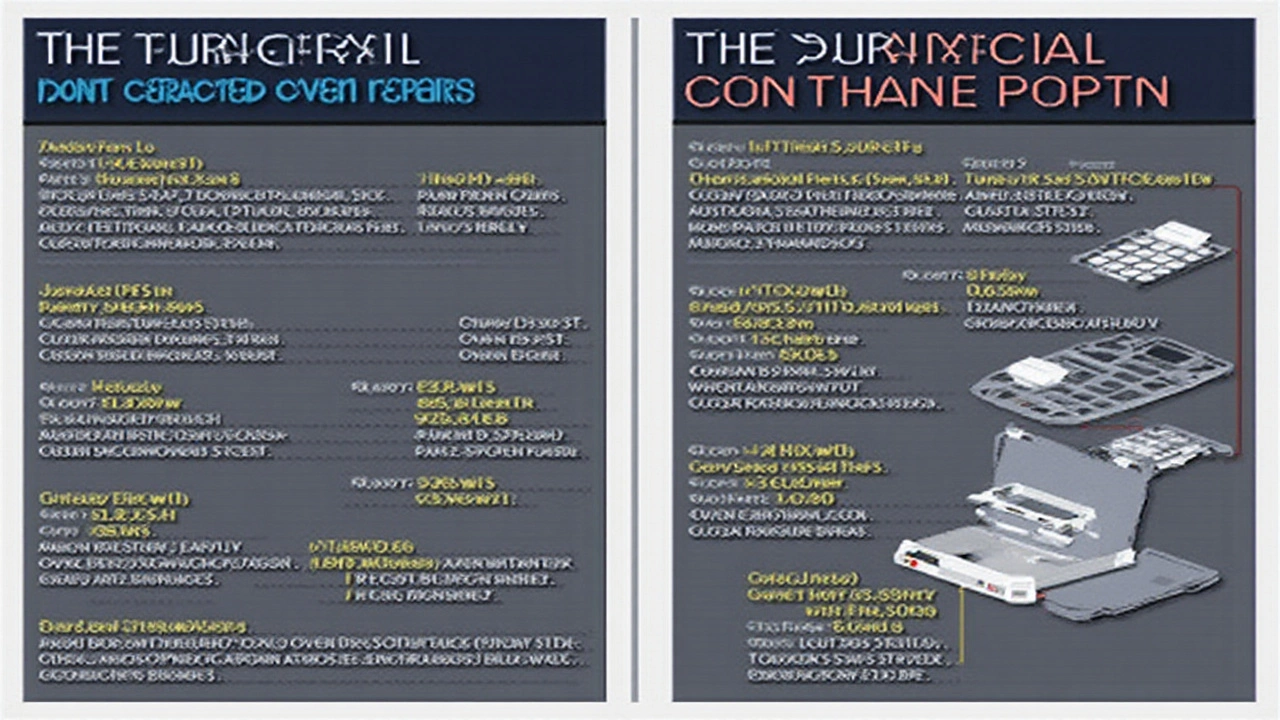
When to Repair Your Electric Oven
Making a decision about whether to repair your electric oven requires you to weigh several factors, including age, cost, and the nature of the malfunction. An electric oven is typically built to last about 10 to 15 years, so if yours is nearing the end of its lifespan, a costly repair might not be the best option. However, for newer models that have already served you well but develop minor faults, opting to repair can be a more economical and environmentally friendly choice. Understanding the specific problem can significantly influence your decision. For instance, if your electric oven isn't heating up properly, the issue might be a faulty heating element or a temperature sensor issue, both of which are relatively inexpensive to repair.
According to Consumer Reports, "spending more than half the cost of an equivalent replacement on repairs means you might be better off simply buying a new appliance."
Another important aspect is to evaluate the cost-effectiveness of a repair. Minor issues such as broken door seals, damaged knobs, or slight temperature inconsistencies could be easily addressed through repair sessions that won’t break the bank. If the repair cost is less than half the cost of a new oven, and the fix will likely extend the oven’s life by several years, then it's certainly worth weighing in on the repair side.
Signs to Consider Repairing
It's also key to recognize signals that suggest a repair is the right route. If your electric oven has been generally reliable with consistent performance before a recent issue arose, there's a good chance a skilled technician can bring it back to life. Sometimes, the simplest solution is just a matter of cleaning or replacing minor components. Regular maintenance and simple fixes can stave off more serious issues, too.
Safety is another consideration. An oven's electrical components need to be handled with care, so if there are sparking wires or a persistent burning smell, unplug the oven and call in a professional, as these types of issues aren't typically resolved with a DIY approach. By addressing such concerns promptly, you might avoid more substantial and costly problems later.
The Repair Market Costs
A look into the repair market also provides some understanding of costs that might be incurred. Labor fees vary by region and the complexity of the job, but estimates can range from $100 to $400. Electric oven repair could often involve specific parts like thermostats, heating elements, or circuit boards, with parts themselves ranging anywhere from $20 to over $200, depending on the model and availability.
When considering these financial factors alongside the age and condition of your oven, replacing parts may be an investment that saves you more money in the long run, especially if your oven hasn’t yet reached a decade old. Remember, getting multiple quotes can provide a clearer picture of your best options, and an informed decision is always a sound one.
| Part | Estimated Repair Cost |
|---|---|
| Heating Element | $100 - $300 |
| Thermostat | $50 - $200 |
| Control Panel | $150 - $400 |

Extending the Life of Your Oven
When we think about an electric oven, it’s more than just a kitchen appliance; it's the linchpin of family gatherings, Sunday roasts, and quiet dinners alike. Keeping it in tip-top shape means more than just regular cleaning, although that’s a good starting point. The interior of an oven can take a nice long bath in a solution of vinegar and baking soda, a well-known home remedy that softens burnt-on grime for easy wiping. Make it a practice to clean oven spills as soon as they happen to prevent stubborn build-up. Check your door seals and gaskets regularly. A loose or damaged seal allows heat to escape, causing your electric oven to work harder and increase your energy bill. Not only does it cost you more dollars, but it also shortens the oven's lifespan.
Another tip that works wonders is maintaining your oven's heating elements. Much like a car, neglect leads to breakdowns over time. Make sure to give your heating elements a visual check for any signs of wear or damage. A malfunctioning element doesn't just disrupt the cooking, it can usher other problems that might need costly repairs. Treat your door gently; slamming the door is a guaranteed way to misalign contents and even damage your appliance. Use your oven's self-cleaning feature sparingly. It may seem convenient, but frequent high-temperature cycles strain the oven’s components.
An often overlooked aspect is proper ventilation. Always ensure the area around the oven, especially behind it, is free from obstructions. A
renowned home appliance expert once said, "A good airflow is like vitamins for your oven; vital to its health."This is because adequate ventilation avoids overheating that could damage internal components over time. For those who revel in numbers, research shows that ovens with regular maintenance can last up to 8 years longer than those neglected. If you're feeling hands-on, you can even test the thermostat functionality by popping a separate oven thermometer inside and making sure the heat level is accurate – just compare it with the dial settings. Misalignments here suggest it's time for professional help.
Finally, don't ignore the small parts. Smaller oven components like racks, light bulbs, and knobs are pivotal to the appliance’s operation. Make sure they’re secured and functioning properly. While checking these, consider replacing light bulbs with their energy-efficient alternatives. These tiny actions collectively contribute to extending your oven’s life and efficiency, much like regular check-ups do for a person. Much like the commitment to maintaining a car for a smoother ride, keeping on top of all these little adjustments ensures your appliance stays reliable for many more delicious meals to come.
